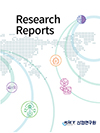Research Reports

First of all, Chapter2 analyzes the strategy of Korea ODA to SMEs in Vietnam. The Vietnamese government has made considerable efforts to establish various policies to foster SMEs through the first SME development plan for 2006~2010 and the second SME development plan for 2011~2015. However, it is difficult to judge that the Vietnamese government’s efforts have achieved great results when we look at the results of recent surveys on SMEs. The most important reason is that Vietnamese SMEs failed to enjoy the benefits from technology transfer due to lack of absorptive capacity to assimilate the technology of Korean companies in Vietnam.
Based on these analyzes, the policy proposals for ODA strategies related to the development of SMEs in Vietnam are as follows. First, a closer examination of coordination and harmonization in aid activities among ODA donors to Vietnam should be preceded. In particular, the major activities of Korea and Japan ODA to Vietnamese SMEs are concentrated in vocational education in university and etc. Therefore, it is necessary to prepare a joint program between Korea and Japan for this field.
Second, given the fact that Vietnam’s economy will depend on the business activities of foreign-invested companies for a considerable period of time, an ODA program should be set up to foster SMEs in consideration of such specificity.
Third, ODA programs for financial constraints should be prepared because Vietnamese SMEs perceive them as the biggest constraints.
Chapter3 deals with strategies to support industry clusters in Vietnam. The main analyzes are as follows. First, as many industry cluster projects are being carried out, specialized industry clusters according to the region have not been developed systematically. Instead, industry clusters are being created competitively to attract foreign investment and stimulate local economy.
Second, innovative clusters are becoming more important as universities, research institutes and companies collaborate to carry out technology development and innovation activities. However, the industry clusters of Vietnam are centered on traditional ones for the purpose of attracting companies only.
Third, various environmental problems are exacerbated by the excessive number of IZ and the rapid increase of companies. According to an interview with the Ministry of Industry and Trade in Vietnam, Vietnam Academy of Social Science and etc, only 15% of industry clusters are constructing wastewater treatment facilities.
Based on this analysis, Chapter3 suggests the following policy recommendations. First, the policy advisory group can be considered. It is expected that a positive effect will be achieved if policy advice is made on the establishment of a cluster project for strengthening corporate innovation capacity in ODA cooperation with Vietnam.
Second, it supports education and training ODA. It is necessary to organize a human resource development program that invites Vietnamese employees to Korea for short-term technical education or to operate educational programs related to the electronics industries in Hanoi and Ho Chi Minh, where many Korean companies have advanced.
Third, it is also necessary to consider ODA projects to support establishment of facilities. Considering the policy demand of the Vietnamese government, which is aiming at a Technology-Intensive cluster from a simple production base, it will be necessary to expand programs to support the construction of public research institutes related to major industries in Vietnam.
Finally, Chapter 4 deals with Korea’s export-oriented industrialization strategies to Vietnam. The main analysis contents are as follows. Since the introduction of reform and opening-up policies in Vietnam, the foreign sector has been rapidly expanding, centered on trade in goods. Among Vietnam’s total exports, the share of manufacturing has increased rapidly from 49.8% in 2005 to 78.5% in 2016. Among them, exports of high-tech electrical and electronic parts and parts have been increasing significantly. In addition, Vietnam’s trade structure is highly correlated with the production activities of local FDI firms based on the global value chain.
Considering these situations in Vietnam, we will be able to take the following points into account when establishing export-oriented industrialization strategies and programs. First, it is reasonable to focus mainly on indirect support for the product groups that Vietnam already has a comparative advantage among export goods. For example, indirect support is provided to improve transportation and energy infrastructure, and to develope advanced human resources. On the other hand, it is necessary for the products which are at a comparative disadvantage to analyze the constraints of exportoriented industrialization more specifically. It would also desirable to establish and implement a support program focusing on them.
Second, it is necessary to design and implement a support program that focuses on major constraints in Vietnam's export. For instance, major constraints are as follows: low industrial productivity, insufficient protection of private property rights, weak forward and backward linkages, and lack of information on overseas markets and demand.
Third, as a result of the product space analysis, the following products can be identified as promising export items in Vietnam, so we can consider supporting them as main product groups: steel products(ex. steel structures), processed wood, aluminum products, plastic products, boiler products, and electric motor parts.
Fourth, as the cases of major assistance in Vietnam shown in this paper, the following areas are important for success: responsibility of donors, the interest of local development partners, willingness to make policies, the effectiveness of policy coordination and enforcement, and the involvement of the private sector.

The works on this page are licensed for fair use under the provisions of the Korea Open Government License. See kogl.or.kr for more information.
Please enter the security text below
to prevent email collection
Please check the information of the person in charge.
연구과제 제안이 접수되었습니다.
신청이 접수되었습니다.


View Summary
코로나19 발생 이후 대부분의 고용 관심사가 항공 및 여행서비스, 음식·숙박 서비스 등 주로 서비스 업종에 집중된 상황에서 본 연구는 최근 그 중요성이 강조되고 있는 제조업의 고용변화를 살펴보았다. 분석에 따르면, 코로나19 이후 제조업 고용은 비교적 큰 충격 없이 빠르게 회복하는 모습을 보이고 있다. 제조업 고용은 서비스업에 비해 큰 충격 없이 유지되고 있고, 코로나19 직후 2020년 상반기에 약간 하락하였지만 하반기부터 회복 추세를 보이고 있으며, OECD 주요국의 제조업과 비교하여도 일본과 함께 고용 충격이 비교적 작게 나타나고 있다. 그러나 전반적으로 양호한 고용 성적에도 불구하고 제조업 내 특성 별로는 차이가 나타나는 것으로 보인다. 종사상 지위 별로 보면, 임시·일용직, 고용원이 있는 자영업자에서 고용 충격이 상대적으로 크게 나타났고, 상용직과 고용원이 없는 자영업자는 큰 충격이 없는 것으로 나타났다. 제조업 규모별로는 300인 이상의 경우 코로나 발생 초기 약간의 충격 이후 고용이 빠르게 반등하면서 코로나 이전보다 고용이 더 증가한 반면, 이보다 작은 규모의 제조업체들의 경우 고용 회복이 더디게 나타나고 있다. 고용의 중장기, 단기 추세선을 비교한 결과 제조업 업종에 따른 차이를 보였다. 코로나 발생 이전 3년간의 추세선을 2020년 1월부터 연장한 선과, 2020년 1월부터의 실제 자료를 이용한 단기 추세선을 비교한 결과, 의약품은 코로나19 발생 이전부터 시작하여 코로나19 발생 이후에도 견조한 증가세를 유지하고 있으며, 전자부품·컴퓨터, 기타운송장비, 가구는 코로나19 이후 오히려 고용 추세가 개선되었다. 그러나 다수 업종은 코로나 발생 이후 고용이 하락하였는데, 특히, 비금속광물, 1차금속, 금속가공 분야나 인쇄·기록매체 업종에서 하락이 상대적으로 크게 나타났다.
The following information is provided.
inform@kiet.re.krPlease complete the CAPTCHA below.
[전지적키에트시점] (Eng sub)심상치 않은
국내 대기업 움직임??
KIET 시점에서 보는 미래 로봇 산업 전망은
어떨까요?
경제전문가가 알려드립니다!
(산업연구원 박상수 실장)


